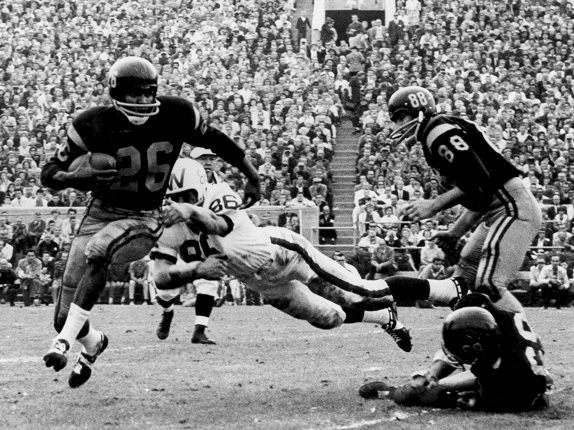


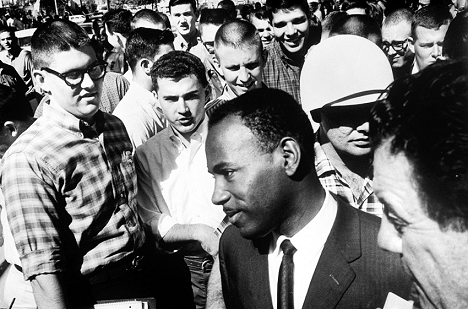
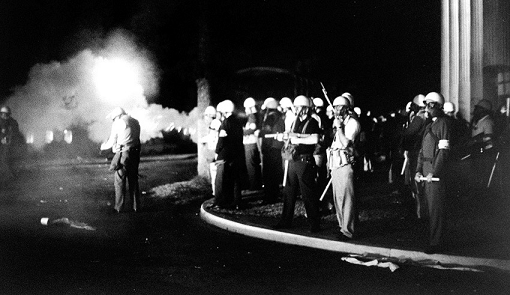
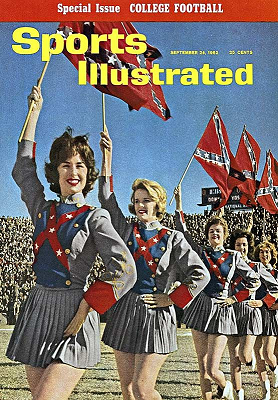
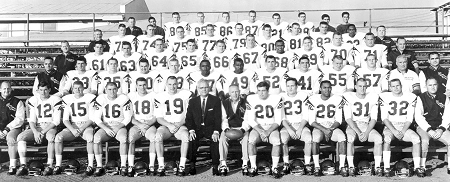
| Duke (8-2) | 14-7 | #14 |
| at Southern Methodist (2-8) | 33-3 | |
| at Iowa (4-5) | 7-0 | |
| California (1-9) | 32-6 | |
| at Illinois (2-7) | 28-16 | |
| Washington (7-1-2) | 14-0 | #18 |
| at Stanford (5-5) | 39-14 | |
| Navy (5-5) | 13-6 | |
| at UCLA (4-6) | 14-3 | |
| Notre Dame (5-5) | 25-0 | |
| Rose Bowl Wisconsin (8-2) | 42-37 | #3 |
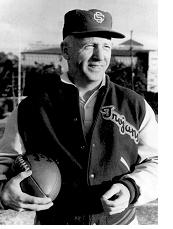 Southern Cal had previously won national championships in 1931 and 1932
under Hall of Fame coach Howard Jones. Another Hall of Famer, John
McKay (pictured at left), brought the Trojans a 2nd round of greatness as head coach
1960-1975, going 127-40-8 and winning 9 conference championships and 4
school-claimed MNCs (I count fewer). McKay had played at halfback for
Purdue in 1946 and for Oregon 1947-1949. He had then been an assistant
coach at Oregon 1950-1958, then at Southern Cal for one season in 1959
before being promoted to head coach. Southern Cal had been on probation
when he took over, and they went a mere 4-6 in 1960 and 4-5-1 in 1961
before breaking through for 11-0 this season. McKay is the winningest
head coach in USC history. After his tenure at Southern Cal, he became
the first-ever coach for the Tampa Bay Buccaneers 1976-1984, going
44-88-1.
Southern Cal had previously won national championships in 1931 and 1932
under Hall of Fame coach Howard Jones. Another Hall of Famer, John
McKay (pictured at left), brought the Trojans a 2nd round of greatness as head coach
1960-1975, going 127-40-8 and winning 9 conference championships and 4
school-claimed MNCs (I count fewer). McKay had played at halfback for
Purdue in 1946 and for Oregon 1947-1949. He had then been an assistant
coach at Oregon 1950-1958, then at Southern Cal for one season in 1959
before being promoted to head coach. Southern Cal had been on probation
when he took over, and they went a mere 4-6 in 1960 and 4-5-1 in 1961
before breaking through for 11-0 this season. McKay is the winningest
head coach in USC history. After his tenure at Southern Cal, he became
the first-ever coach for the Tampa Bay Buccaneers 1976-1984, going
44-88-1.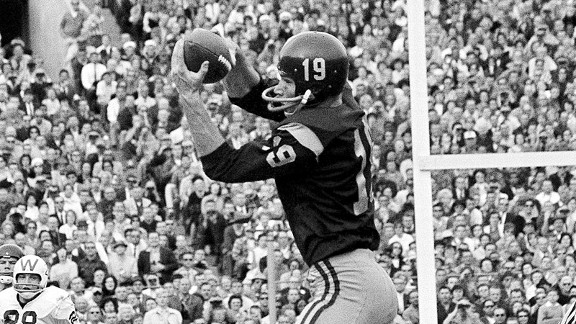
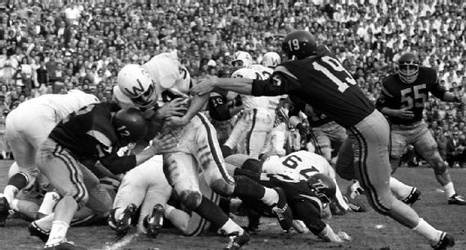
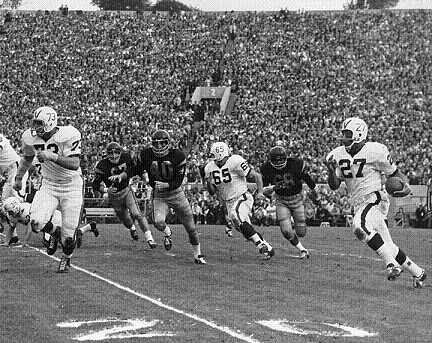
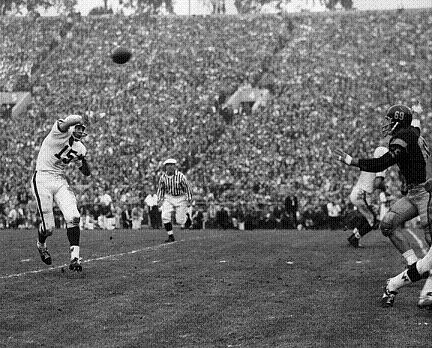
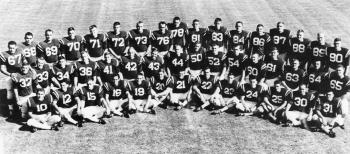
| at Memphis (8-1) | 21-7 | #25 |
| Kentucky (3-5-2) | 14-0 | |
| Houston (7-4) | 40-7 | |
| Tulane (0-10) | 21-0 | |
| (Memphis) Vanderbilt (1-9) | 35-0 | |
| at Louisiana State (9-1-1) | 15-7 | #5 |
| Tennessee-Chattanooga (5-5) | 52-7 | |
| at Tennessee (4-6) | 19-6 | |
| Mississippi State (3-6) | 13-6 | |
| Sugar Bowl Arkansas (9-2) | 17-13 | #7 |
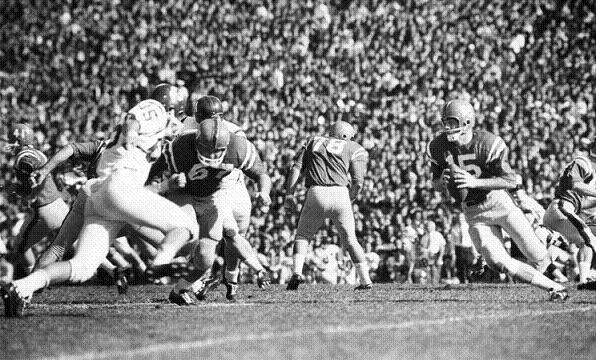
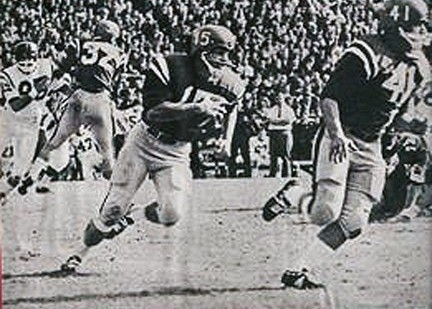
| Southern Cal 11-0 | Mississippi 10-0 | |||||||||||||||||||||||||||||
|---|---|---|---|---|---|---|---|---|---|---|---|---|---|---|---|---|---|---|---|---|---|---|---|---|---|---|---|---|---|---|
|
|
|||||||||||||||||||||||||||||
| 1) National Championship Foundation | 4.67 |
| 2) Billingsley (math system) | 4.64 |
| 3) DeVold
(math) |
4.60 |
| 4) Houlgate (math) | 4.53 |
| 5)
College
Football Researchers Association |
4.44 |
| 6) Sagarin-ELO (math) | 4.42 |
| 7) Litkenhous
(math) | 4.34 |
| 8) Poling
(math) |
4.33 |
| 9) Helms Foundation | 4.30 |
| 10) Boand (math) | 4.27 |
| 11) AP Poll | 4.20 |
| 12) Sagarin (math) | 4.18 |
| 13) Dunkel (math) | 4.17 |
| 14) Williamson (math) | 3.82 |
| 15) Berryman (math) | 3.23 |
| 1) Boand (math system) | 4.26 |
| 2) College Football Researchers Association | 4.22 |
| 3) Poling (math) | 4.11 |
| 4) Helms | 4.09 |
| 5) Sagarin-ELO (math) | 4.06 |
| 6) National Championship Foundation | 3.96 |
| 7) Dickinson (math) | 3.49 |
| 8) Houlgate (math) | 3.35 |
| 9) Billingsley (math) | 3.34 |
| 10) Sagarin (math) | 3.28 |
| 11) Parke Davis | 2.77 |
| 1) Houlgate (math system) | 4.5 |
| 2) Helms | 4.3 |
| 3) Parke Davis | 4.2 |
| 4) National Championship Foundation | 3.7 |
| 5) Billingsley (math) | 3.6 |